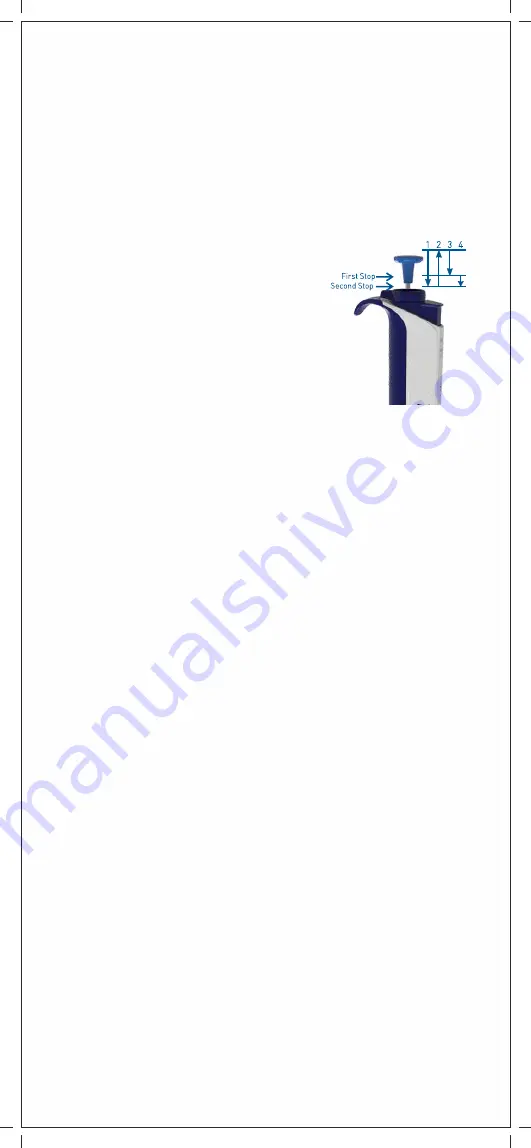
5.8 DISPENSING SAMPLE
1. Place the pipette tip against the reservoir wall to avoid
any bubbles or splashing of sample out of the reservoir.
2. Press the plunger slowly past the first stroke and
second stroke for complete blow out of liquid sample.
For viscous samples, it is recommended to wait for few
seconds till the fluid passes out to the reservoir.
3. Pull the tip gently along the wall of the reservoir and
release the plunger slowly.
4. Discard the tip to avoid any carry over sample or cross
contamination. It is highly recommended to change the
tip and then repeat the pipetting cycle.
5.9 EJECTION OF TIPS
The tip ejector needs to be pressed downwards firmly with the
thumb to ensure proper tip ejection. Once the process is
complete, make sure the tips are disposed of into a suitable
waste container.
- 9 -
3. Dispense the preset volume of
liquid by gently pressing the
operating knob to the first stop.
Hold the operating knob at the
first stop. Some liquid will
remain in the tip and it should not
be dispensed.
4. The remaining liquid should either
be discarded with the tip or
should be dispensed back into the
reagent reservoir.
The reverse pipetting technique is suitable for dispensing
liquids that have high viscosity or a tendency to foam easily.
This technique is also recommended for dispensing very
small volumes.
1. Press the operating knob until the second stop.
2. Dip the tip under the surface of the liquid in the reservoir
and slowly release the operating knob. This action will
fill the tip. Withdraw the tip from the liquid touching it
against the edge of the reservoir to remove excess
liquid.
5.6 REVERSE PIPETTING
•
Hold the pipette vertically; press volume adjustment
knob to its first stop. Place the tip into the sample at
proper depth (refer point # 5.4) and relax your thumb
pressure on the plunger. The light piston spring will
move the piston upward, aspirating sample.
•
Pause for about 1 second (longer for macro-volume
pipettes) to ensure that the full volume of sample is
drawn into the tip.
•
Withdraw the tip from the sample. If any liquid remains
on the outer surface of the tip, touch it off carefully onto
a lint free tissue, taking care not to touch the tip orifice.
6 CALIBRATION AND ADJUSTMENT
All pipettes are been quality tested according to ISO8655-6.
The quality control process according to ISO 8655-6 involves
gravimetric testing of each pipette with double distilled water.
All pipettes are calibrated in ISO/IEC 17025 accredited
laboratory. Each Pipette is calibrated, inspected and validated
by qualified technicians according to defined quality system.
5.7 ASPIRATION OF SAMPLE
Summary of Contents for VWRA613-6688
Page 1: ...Precise High Performance PHP Pipette...
Page 2: ......










































